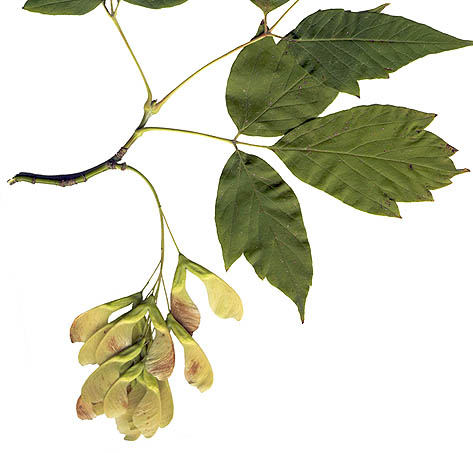
Manitoba maple (Acer negundo) is a very common tree of disturbed habitats, often growing in deserted parking lots or old-fields. Its original distribution range covers the drier interior of North America such as Manitoba, but the species has firmly established itself in Ontario. Manitoba maple reproduces in the same way as most animals, where one individual tree is male and only produces flowers bearing pollen, while another female tree only produces flowers with egg cells. Upon fertilization with pollen, these eggs will grow into the characteristic maple keys. This reproductive system involving purely male and female individuals, while the most dominant system in animals, is quite rare in plants. In fact, only about 6% of flowering plants reproduce this way. This reproductive system is called dioecy. The vast majority of plants are hermaphroditic, where bisexual flowers grow both pollen and egg-baring structures. Manitoba maple is thus a member of the rare club of dioecious plant species.
Researchers have found that male and female individuals of Manitoba maple behave differently. In particular, drought-prone habitats are occupied more by male than female individuals. This is because male Manitoba maple individuals are slightly more drought-resistant compared to females. Therefore, they are less likely to die from drought. The comparably less water-efficient females perish more often during summer dry spells, leaving a larger fraction of male survivors in dry locations. In contrast, females are more efficient at utilizing the abundant water in moist soils, and are able grow faster than males. This allows females to outcompete and replace males in these moist locations, making moist areas female biased. Only on intermediately moist soil conditions do male and female Manitoba maple individuals occur with the same frequency. Who knew that some male and female trees had such different abilities!
Text written by Ivana Stehlik, based on Anfal Patel’s original text
Dawson T. E. and Ehleringer J. R. 1993. Gender-specific physiology, carbon isotope discrimination, and habitat distribution in boxelder, Acer negundo. Ecology 74: 798-815.
Farrar J. L. 1995. Trees in Canada. Fitzhenny and Whiteside Limited, Markham, Ontario.
Photo credit: Agnieszka Kwiecień - Nova at pl.wikipedia, CC BY-SA 3.0 (http://creativecommons.org/licenses/by-sa/3.0/), via Wikimedia Commons